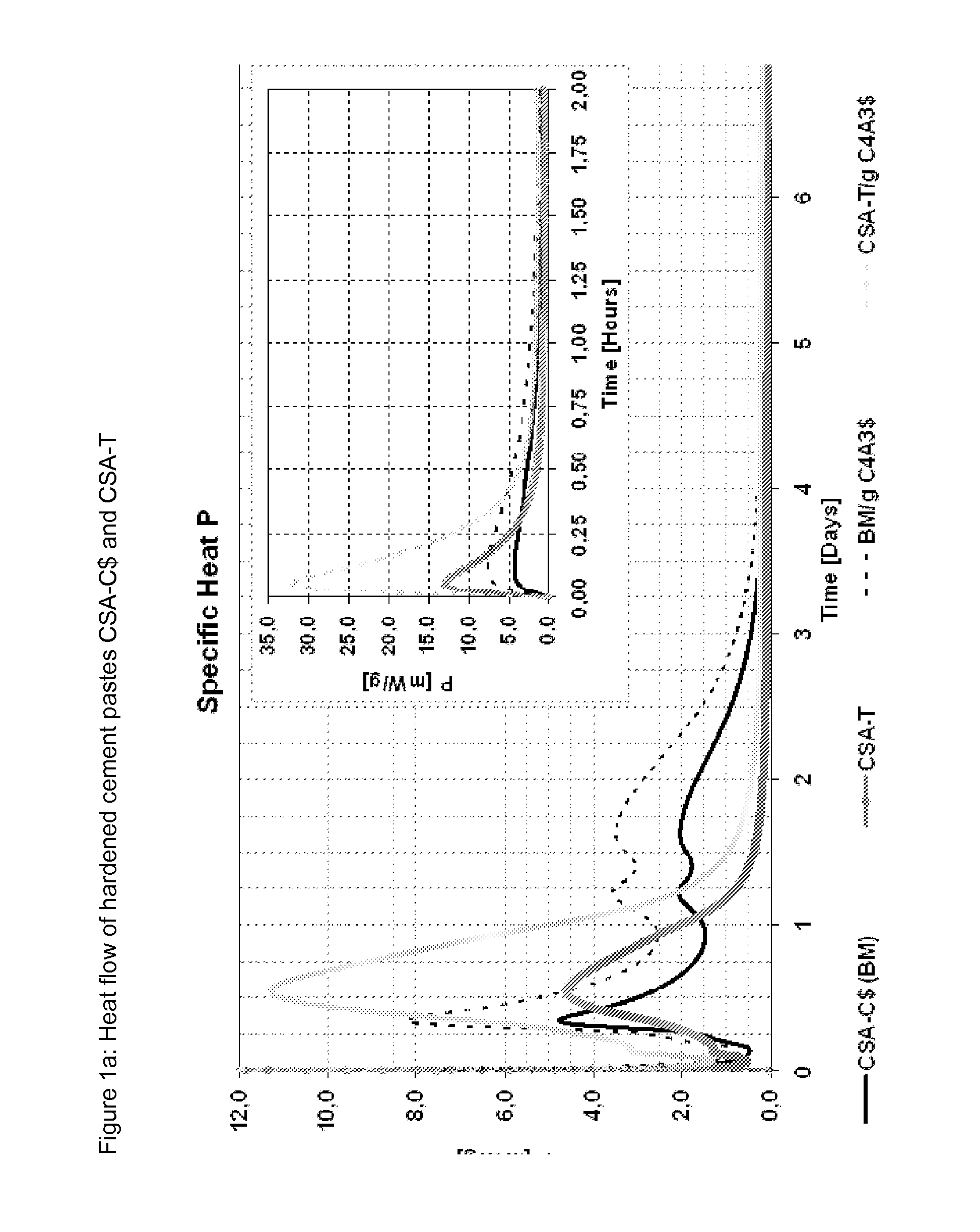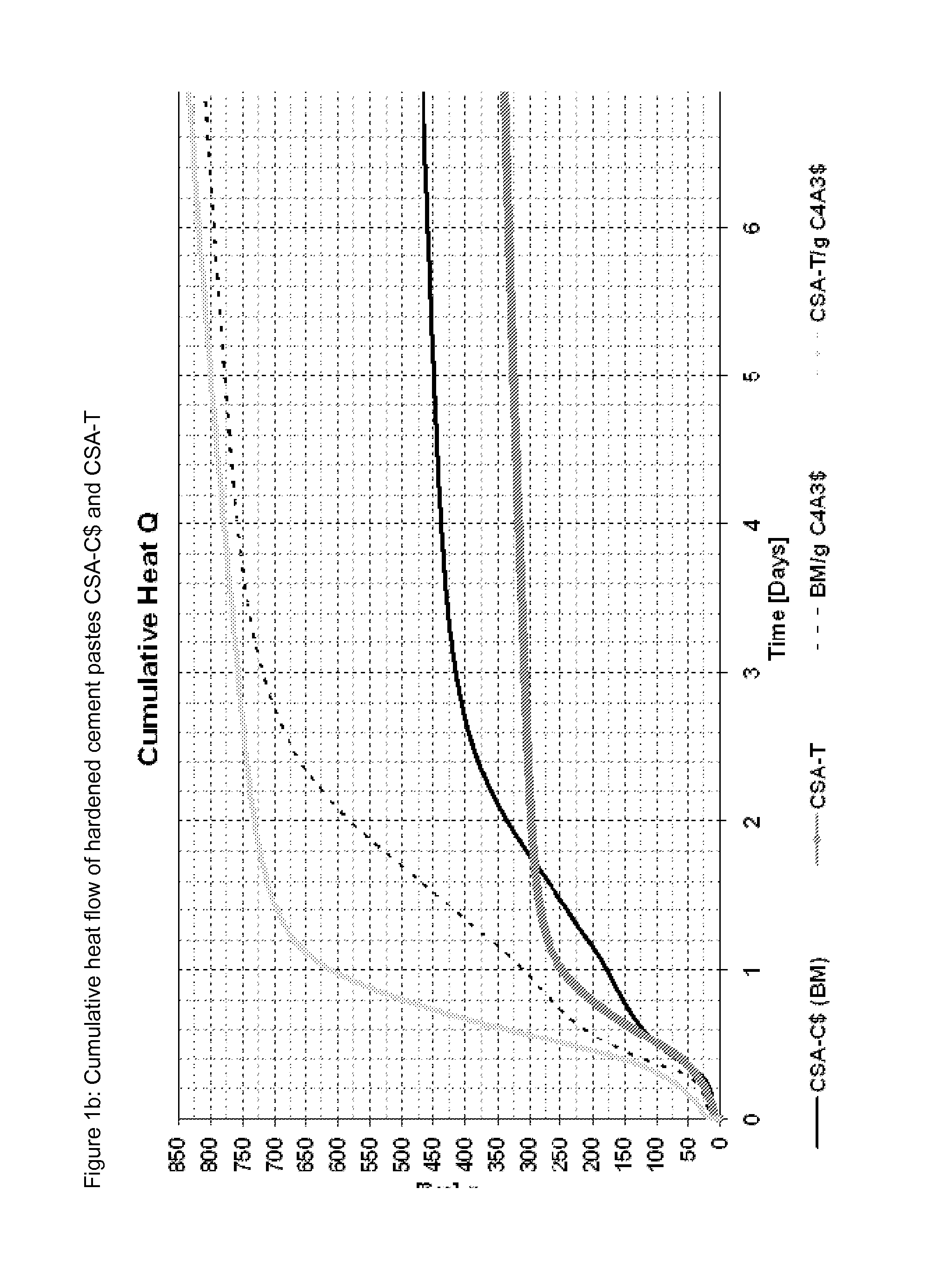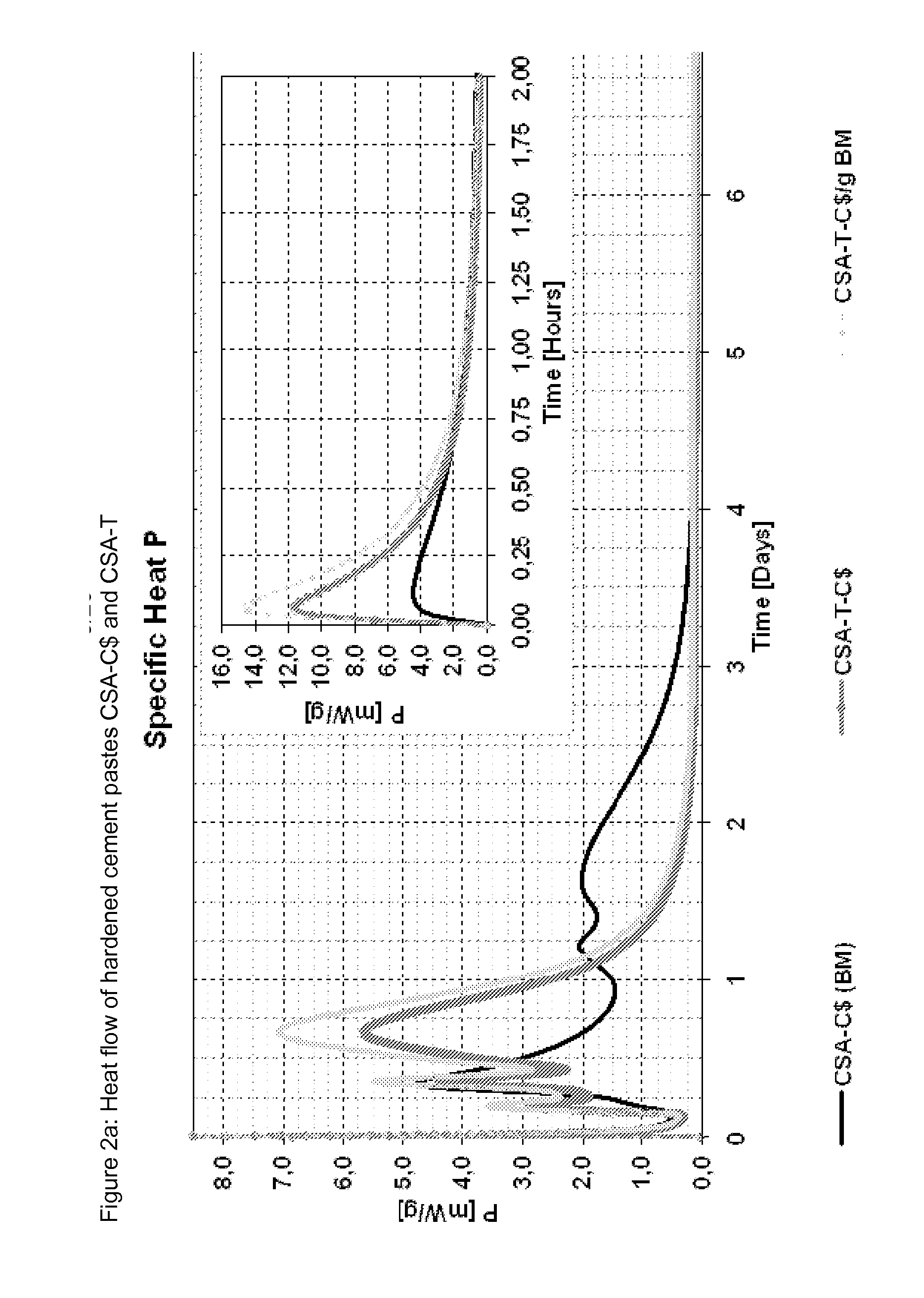Calcium sulfoaluminate cement with ternesite
a technology of ternesite and calcium sulfoaluminate, which is applied in the direction of cement production, solid waste management, sustainable waste treatment, etc., can solve the problems of quantitative increase, reduced residence time required, and increased formation speed
- Summary
- Abstract
- Description
- Claims
- Application Information
AI Technical Summary
Benefits of technology
Problems solved by technology
Method used
Image
Examples
example 4
[0087]Different binders were mixed from a commercial CSA cement (see table 6 for composition) and the three ternesite qualities from examples 1 to 3 as well as Micro A. The compositions of the ternesites are listed in table 4 and the mixing ratios with the cement are listed in table 5; FIGS. 1 to 4 show the heat flow and the cumulative heat flow of the mixtures when mixed with water with a w / b value of 0.7. Table 7 gives the mineralogy of the cements corresponding to Example 4 (QXRD according to Rietveld) and TG data (chemically bonded water) of the cements as well as the hardened cement pastes produced therefrom, standardized to 100% paste; w / c value 0.7.
TABLE 4Chemical (calculated) and mineralogicalcomposition of the clinkers from examples 1 to 3TpurTKFATKAGSOxidesSiO225.00%21.30%22.16%Al2O3—4.75%4.94%TiO2—0.38%0.04%MnO—0.07%0.01%Fe2O3—1.96%0.45%CaO58.34%53.20%55.34%MgO—2.23%0.77%K2O—0.19%0.22%Na2O—0.04%0.02%SO316.66%15.44%16.06%P2O5—0.44%0.01%PhasesAnhydrite0.40.30.2C3A (cub)—2.2...
example 5
[0088]The raw mixture consisted of 44% by weight of K1+25% by weight of FA1+sulfate carrier and Al(OH)3. One sample (M1) was cooled directly after sintering, the second sample (M1a) was subjected to a cooling program for tempering in which the temperature was lowered from 1200° C. to 850° C. over a period of approximately 45 minutes after sintering and the clinker was then cooled rapidly on exposure to air.
example 6
[0089]The raw mixture consisted of 65% by weight of (80% K1 / 20% MK)+5% by weight of FA3+sulfate carrier and Al(OH)3. The sample (M2) was subjected to the same cooling program as M1a after sintering and was then cooled.
PUM
| Property | Measurement | Unit |
|---|---|---|
| Temperature | aaaaa | aaaaa |
| Temperature | aaaaa | aaaaa |
| Temperature | aaaaa | aaaaa |
Abstract
Description
Claims
Application Information
 Login to View More
Login to View More - R&D
- Intellectual Property
- Life Sciences
- Materials
- Tech Scout
- Unparalleled Data Quality
- Higher Quality Content
- 60% Fewer Hallucinations
Browse by: Latest US Patents, China's latest patents, Technical Efficacy Thesaurus, Application Domain, Technology Topic, Popular Technical Reports.
© 2025 PatSnap. All rights reserved.Legal|Privacy policy|Modern Slavery Act Transparency Statement|Sitemap|About US| Contact US: help@patsnap.com



